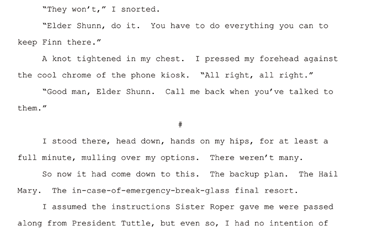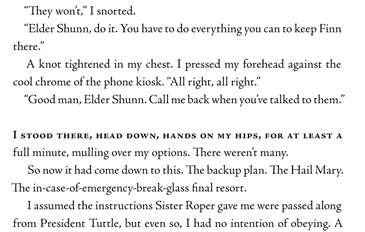When it comes to indentation, keeps things as simple and uniform as possible. Don’t take your cues from the way published books look.

A reader writes to ask:
Why indent the first paragraph? I was under the impression that the first paragraph of a short story, novel chapter, or paragraph following a section break should not be indented.
Since we generally don’t put blank lines between paragraphs in print, indentation is the visual cue we use to indicate the start of a new paragraph. This applies even to the first paragraph of your manuscript, and to all the other cases you mention.
This is a standard convention in all types of writing that do not employ block paragraphs. I believe the confusion about first-line indentation arises because of the way people see it done in published books. They confuse the elements of book design with the elements of manuscript formatting. I’ve written about this before, but it’s worth covering again because the confusion is so pervasive. A manuscript is formatted differently from a published book because it has a different purpose and and a different audience.
Let’s take a few examples. You almost never see double-spacing in a published book, but in a manuscript it’s essential so the editor can mark things up between the lines. (Yes, this even happens with electronic manuscripts.) You don’t see justified right margins or drop caps or decorative page headers in manuscripts because those are elements intended to make a finished book more readable and attractive to consumers. These would be extraneous distractions for your audience—the editor working on your manuscript—and it’s the same thing with unindented first paragraphs.
Try to look at your manuscript more like the blueprint for a book than an actual book. When the editor is done helping you shape it into its best possible state, folks like the typesetter and the book designer will use the manuscript as their starting point for creating an actual physical (or possibly electronic) object. They will take your words and apply all the practical and decorative elements that will make your book a pleasure to hold and look at and read. And none of those elements belong in your manuscript.
Here are two versions of the same passage from my memoir, The Accidental Terrorist: Confessions of a Reluctant Missionary. The first is from the manuscript version, while the second is from the final published version.


Note that in the manuscript version, the section break is indicated by a centered pound sign, and the line that follows is indented. In the published version, the pound sign is omitted, while the line that follows is set in bolded small caps and is not indented. This is the visual cue the book designer has chosen to call attention to the section break. They could have used a drop cap here instead, or bolded only the first three words, or made any number of other design choices. The possibilities are endless, and all equally valid.
In your manuscript, however, you don’t have that kind of leeway. There’s only the one way to do it. You’re the writer, not the book designer. Indent that first line.

